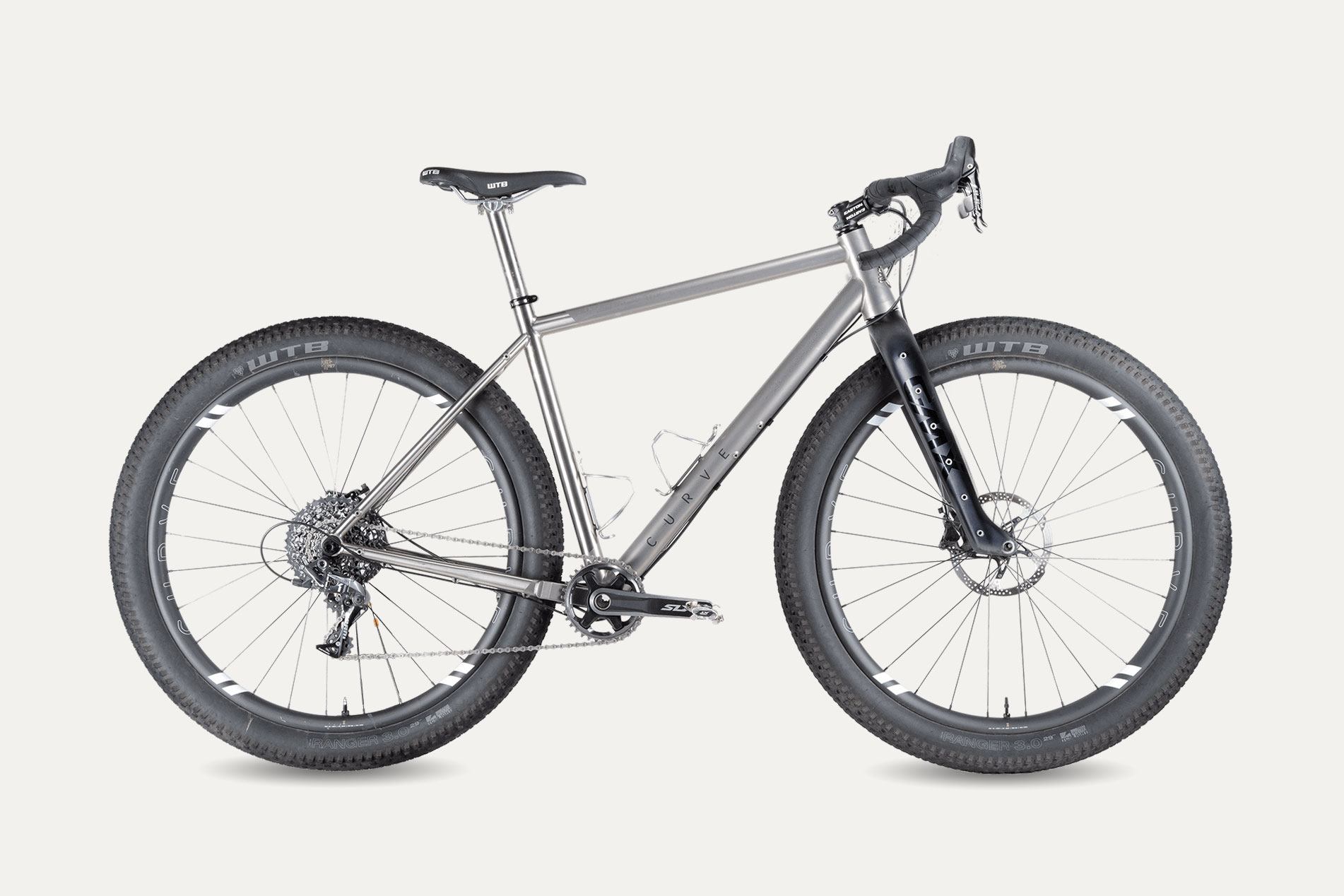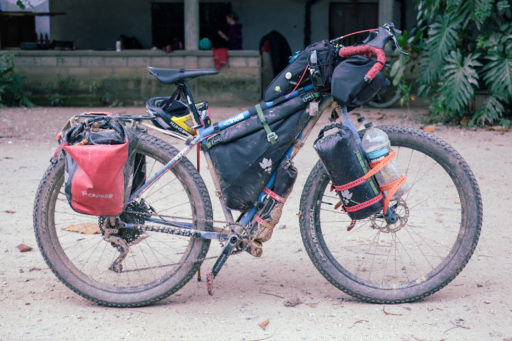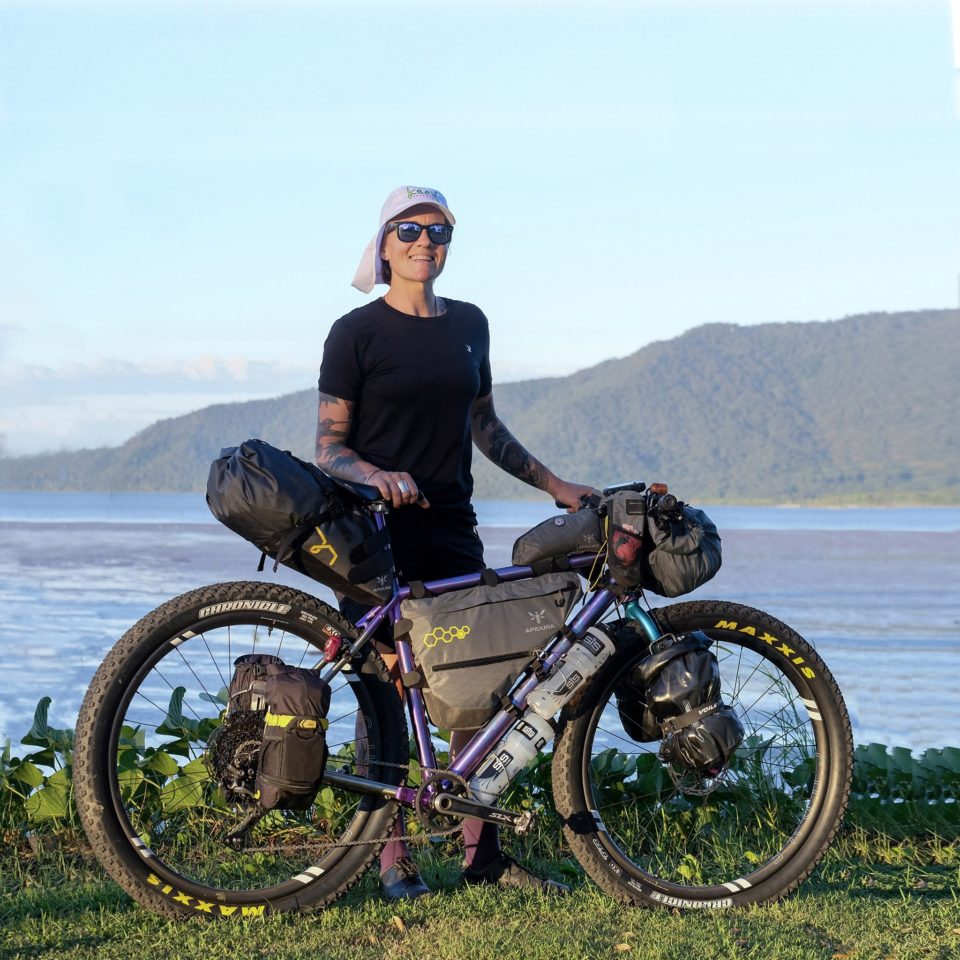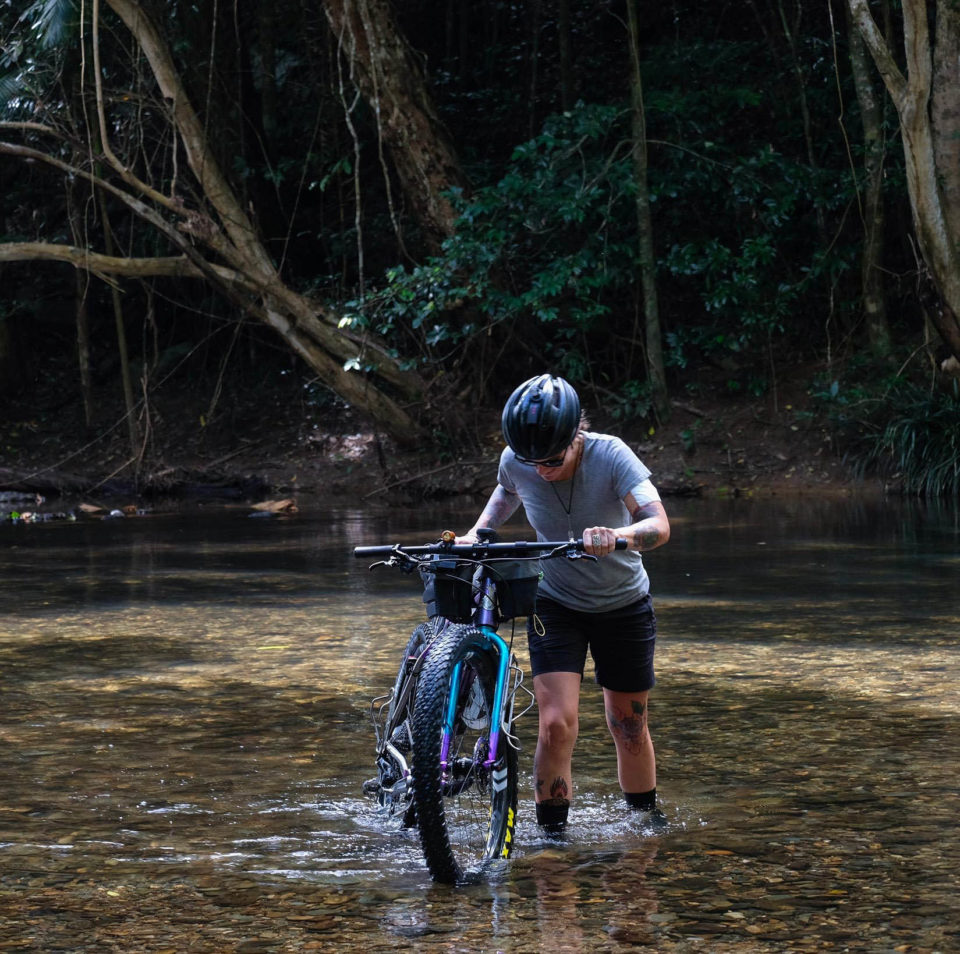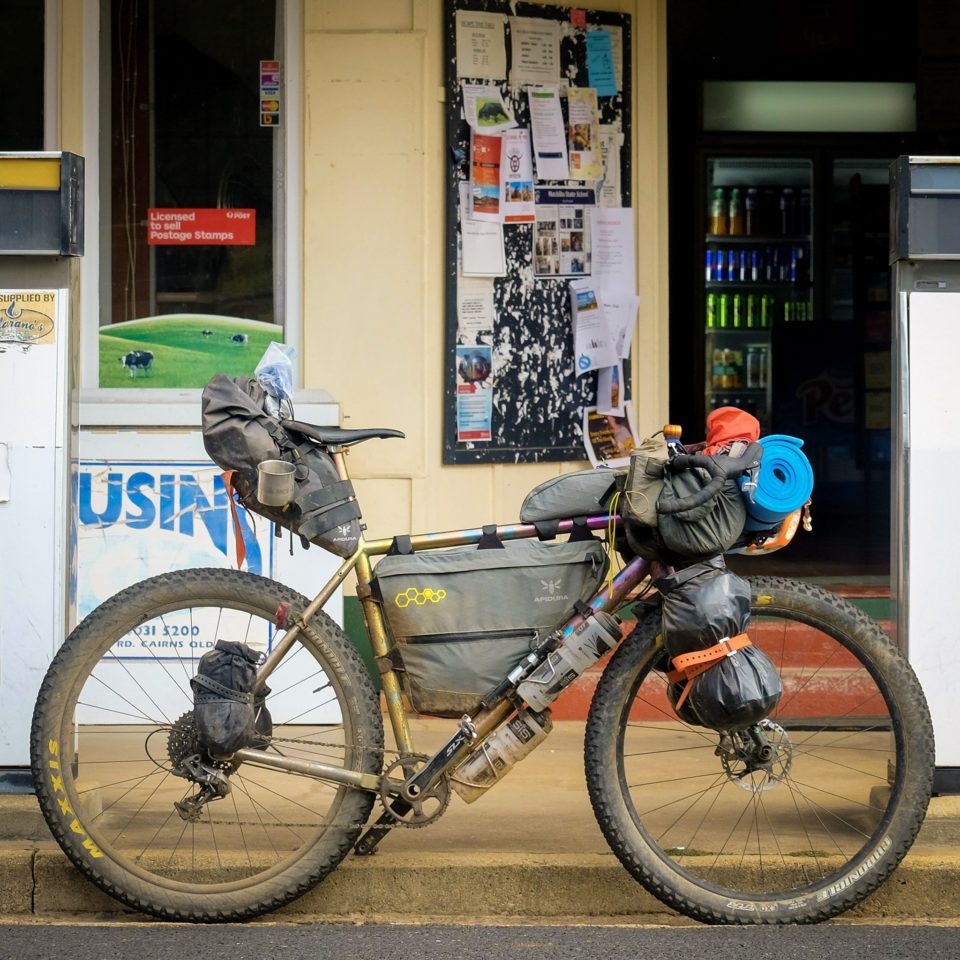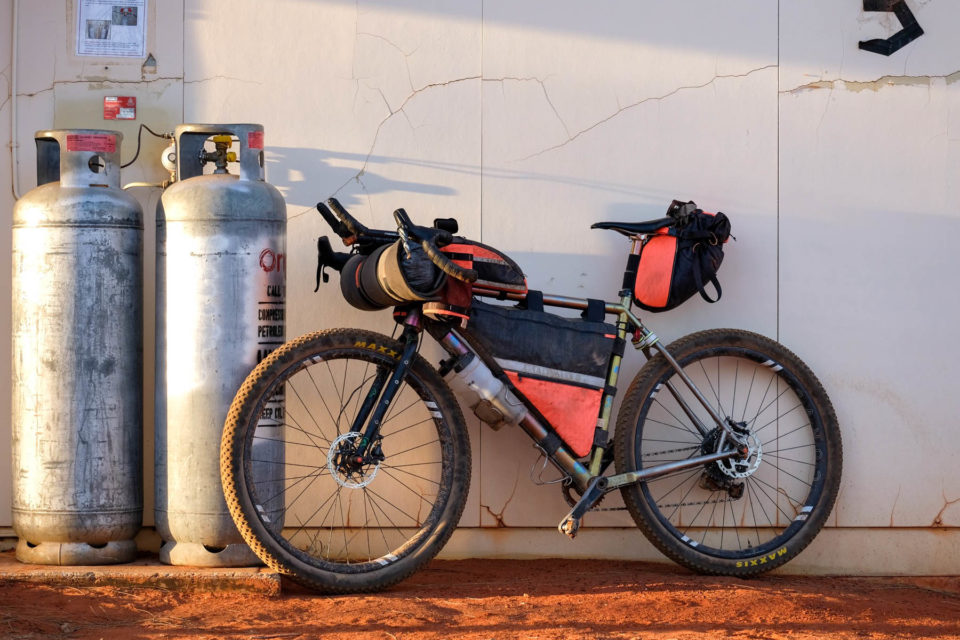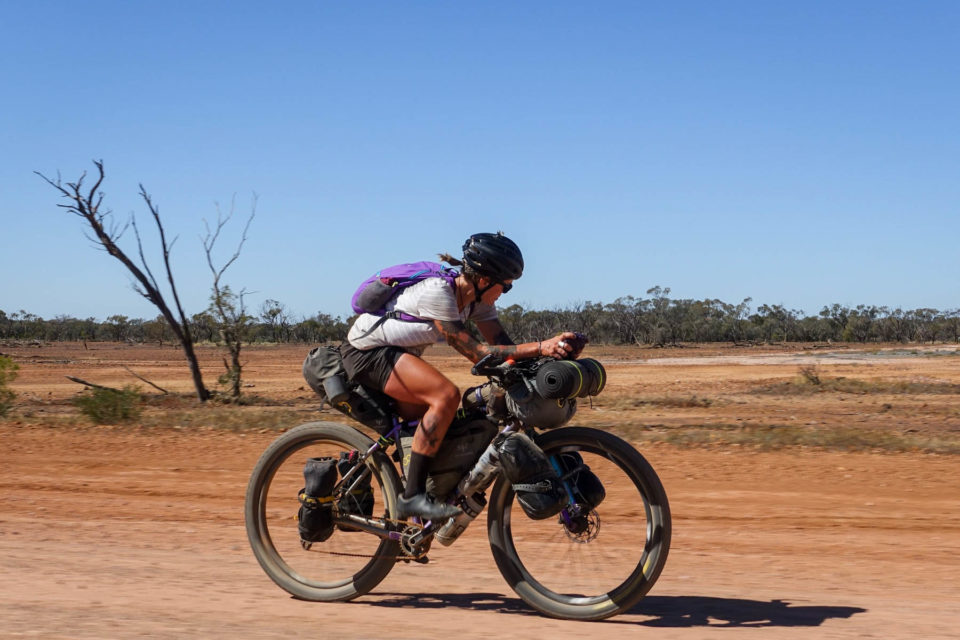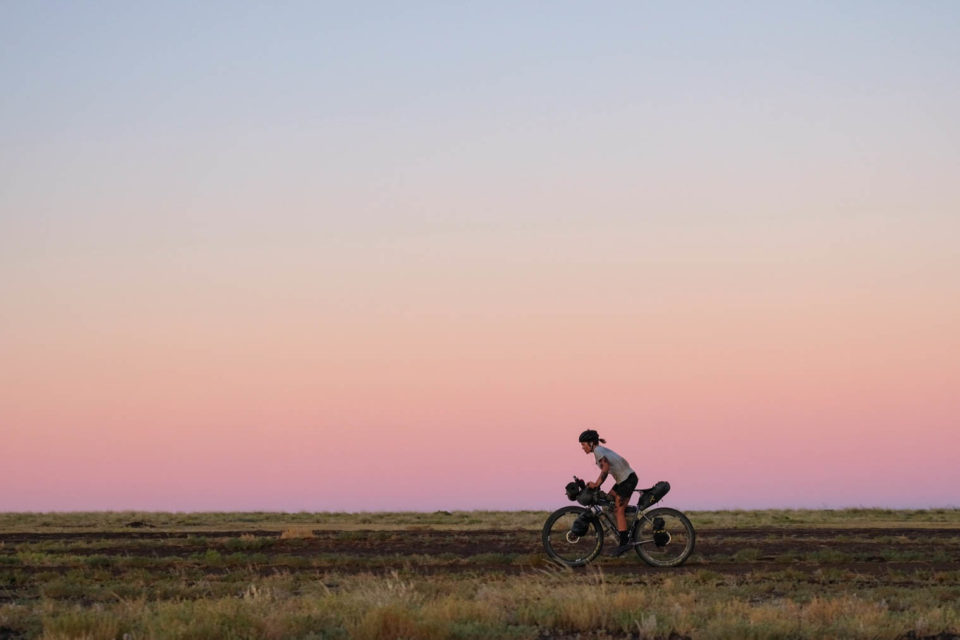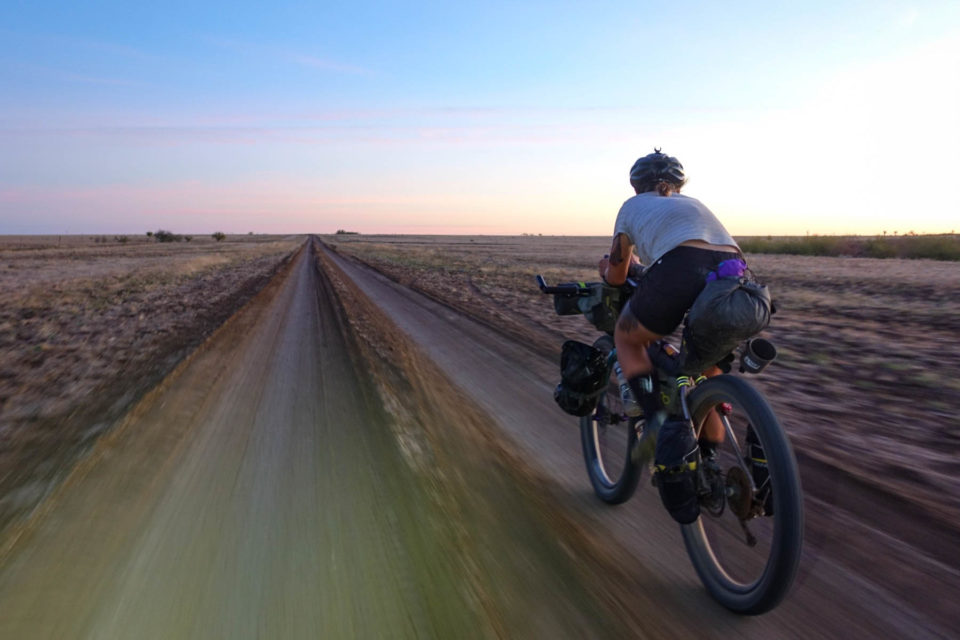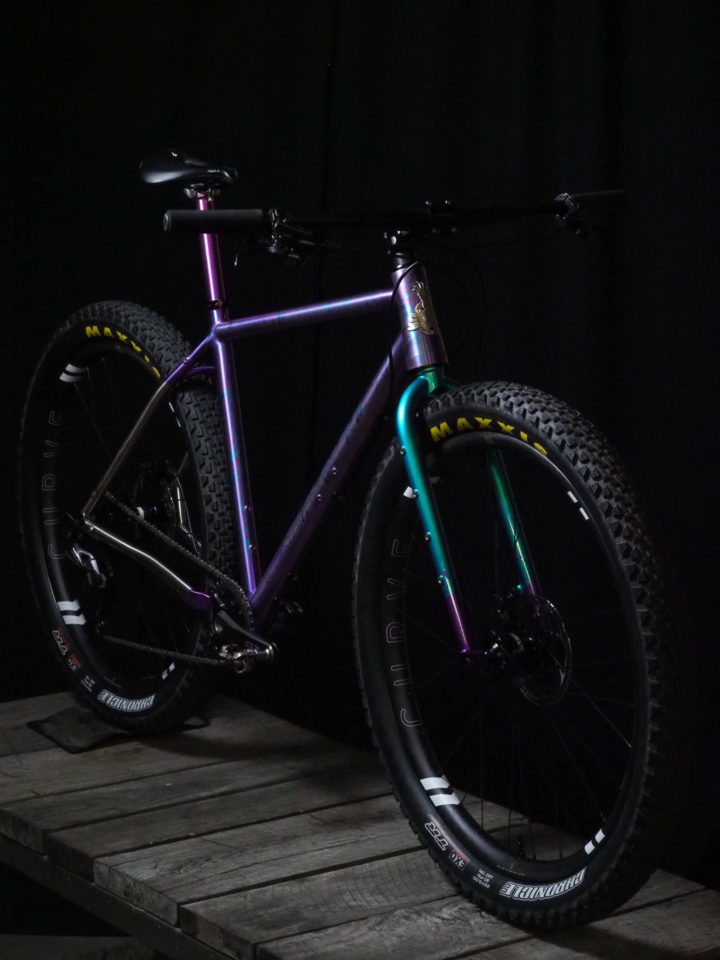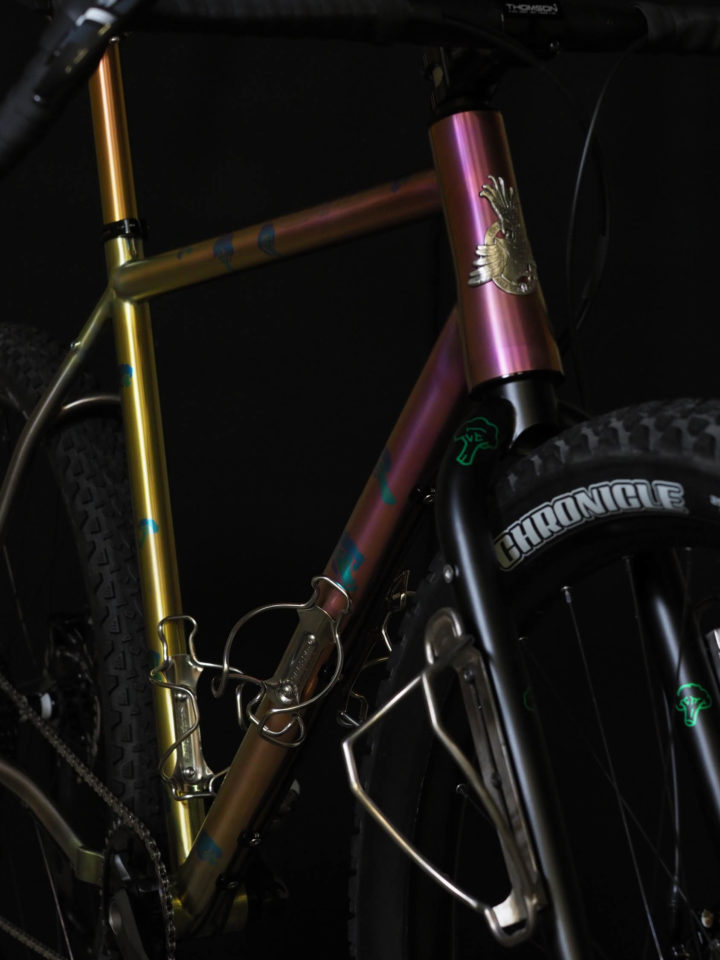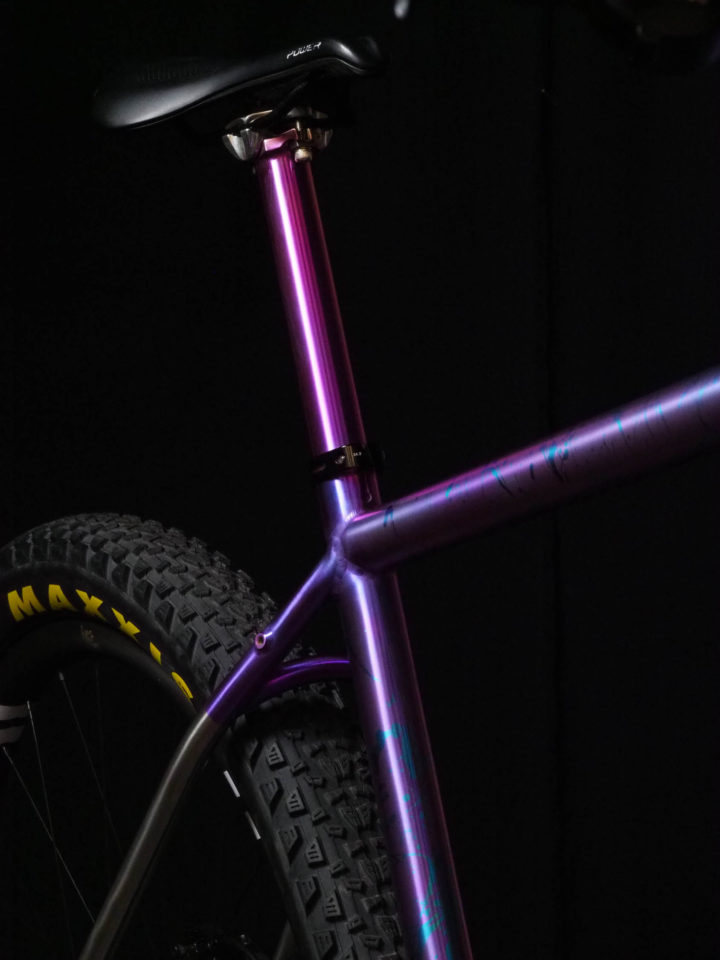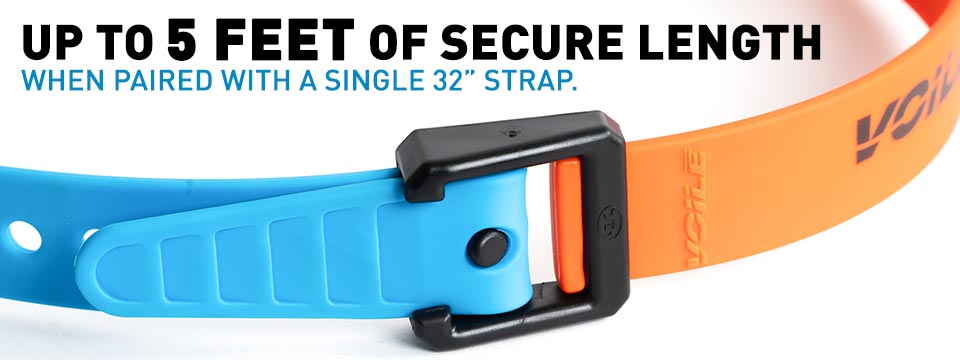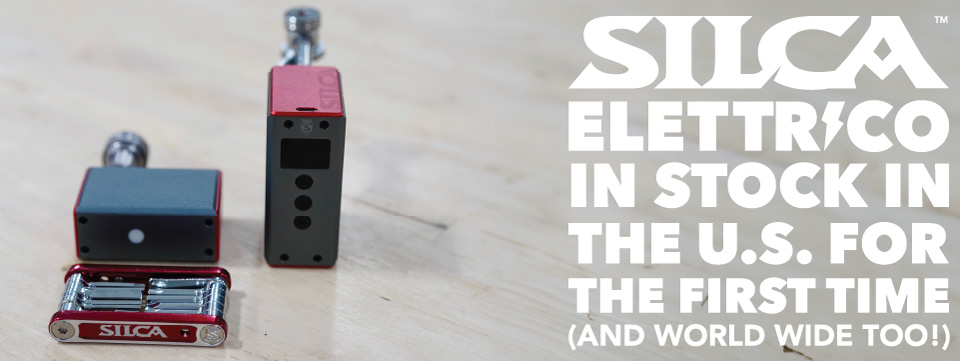The newly designed Curve GMX+ has clearance for 29 x 3.0″ tires and some very unique mounting features, including a new fork with six mounts per blade, and an unprecedented seven pairs of bottle cage mounts on the frame. Find all the specs here and learn about the preorder that kicked off earlier this week…
The new Curve GMX+ is a completely redesigned version of the GMX, which we reviewed a couple of years ago. As its name implies, the GMX+ has clearance for full 3.0″ plus tires and is positioned as Melbourne-based Curve Cycling’s ultimate titanium bikepacking bike.
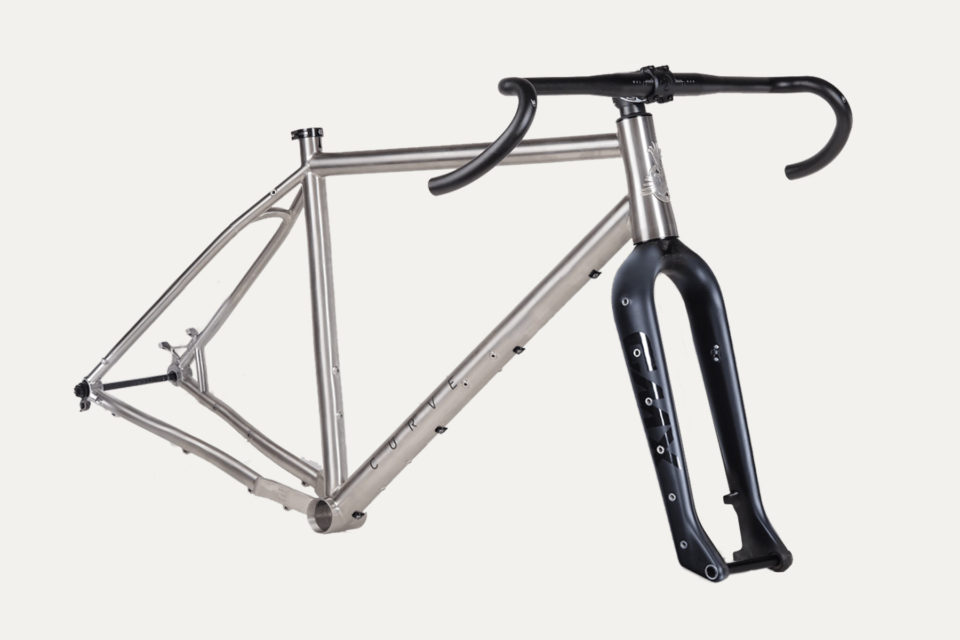
The GMX+ features a 3Al-2.5V Aerospace Grade 9 titanium frame with rear rack mounts and an unprecedented seven pairs of bottle cage mounts: two in the triangle, one under the downtube, two offset toward the top of the downtube, and one on each chain stay.
The GMX+ frame comes in seven sizes ranging from XXS to XL. Sizes SM–XL are designed around 29″ wheels and clear 29 x 3.0″ tires, while XXS and XS frames run 27.5″ wheels and have clearance for 27.5 x 3.0″ rubber. This keeps the geometry proportions and handling characteristics consistent across all sizes, according to Curve.
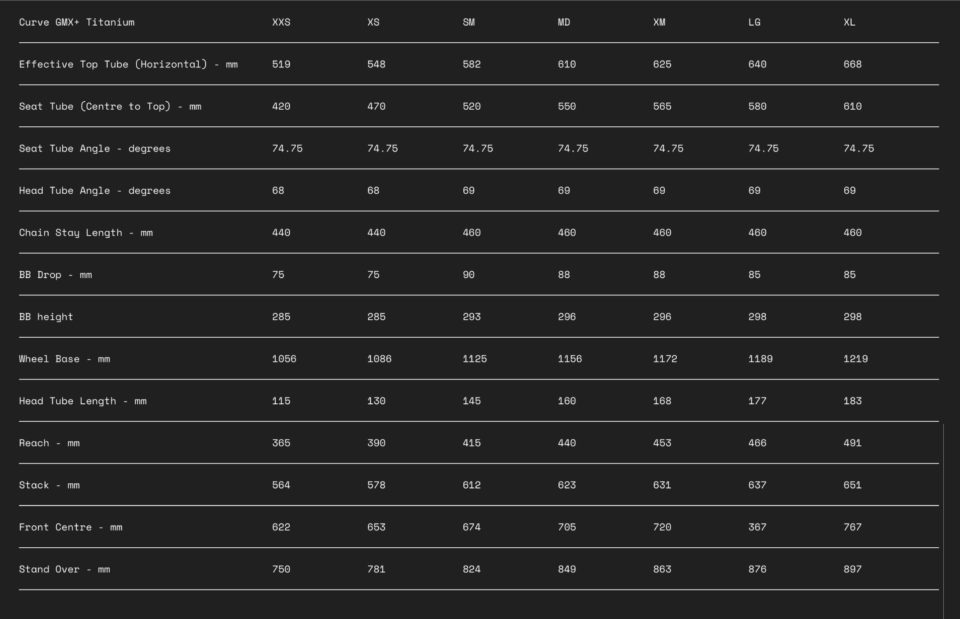
The GMX+ also has a much slacker geometry than the GMX, Boost spacing (15 x 110, 12 x 148mm), and a completely new non-suspension corrected carbon fork with 12 M5 mounts. Additional differences include the cable routing on the down tube instead of the top tube, a T47 bottom bracket shell, and an oversized seat tube for added stiffness.
Curve GMX+ Fork
With a few unique measurements, the GMX+ Fork was designed to work specifically with the GMX+ frame. For starters, it has a 430mm axle to crown length that was planned to allow the best use of storage space within the front triangle. It also has a long, 55mm fork offset, which according to Curve works with the GMX+ frame geometry to deliver stability at speed, yet maintain responsive and nimble handling characteristics on challenging terrain. Most unique are its six inline M5 mounts per blade, providing room for multiple bottle and carrier options. Full specs below…
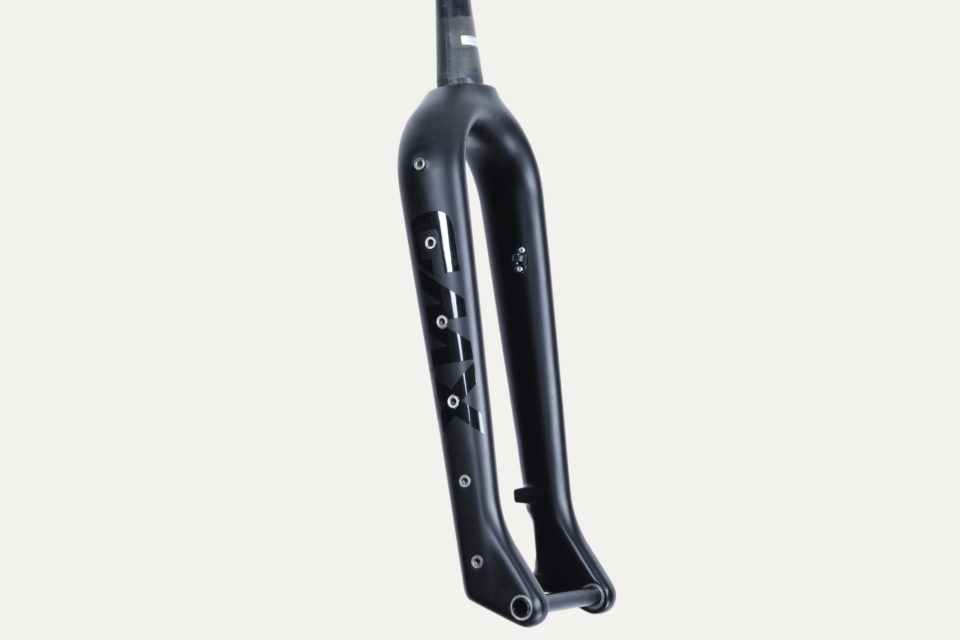
- Carbon construction
- Stainless steel hardware
- Non-suspension corrected
- 12 x M5 mounts (6 per side)
- 430mm axle to crown
- 55mm offset
- 15 x 110mm axle spacing
- 180mm direct post mount brake
- 1.5″ tapered steerer
Perspective from Curve Founder Jesse Carlsson
“I love the history of long-distance cycling in Australia. It’s a shame that this history is largely forgotten. Starting in the 1890s, hardy, and maybe slightly crazy, adventurers would see if they could ride huge the distances between major cities and across Australia. The massive scale of Australia meant that before the advent of the motor vehicle the bike was king. It was the fastest way to cover long distances over land, even through brutal terrain. Unlike a horse, a bike didn’t need feeding and it was a lot more reliable.
The GMX came about when I thought about what the overlanders of the 1890s would build as their dream bike if they were around today. It had to be a bike that you could rely when you didn’t know what sort of terrain you’d face. A bike that wasn’t necessarily perfect for any particular terrain but would be a perfect all-rounder.
The first GMX was built around a standard 29er fork. You can run it with a suspension fork or you can choose a rigid suspension fork from Curve or any other brand. It has been used to set the fastest known times on some long-distance routes in Australia, including the Munda Biddi and Mawson Trails.
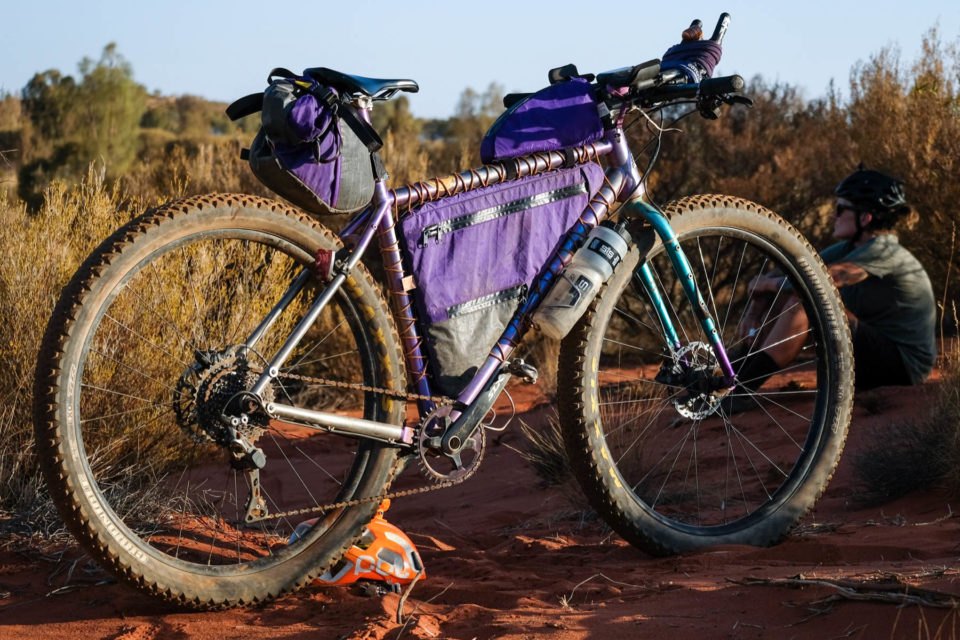
With the GMX2, we started with a clean slate and worked on a bottom-up redesign of my dream bikepacking bike. What we’ve come up with is pretty cool. It builds on the original GMX in some important ways. Here’s the deal… I haven’t ridden with suspension for seven years. For the type of riding and racing I love, it’s just not needed. So, why are all of my bikes designed around a suspension fork? The answer is easy: there isn’t a widely available non-suspension corrected fork that will do the job. Bike manufacturers have been lazy, shoe-horning us into using a mountain bike for bikepacking races. Sure, it will do the job, but it’s not ideal. Fork manufacturers build forks that will work with the frames – they are built higher than needed to correct for suspension. When you don’t need suspension this all seems a bit silly. We’re scrubbed all of this out with the new GMX. I don’t ride with suspension, so the new GMX isn’t designed for it. Our new expedition fork isn’t suspension corrected. Hopefully this gives other frame builders the freedom to build new rigid bikes for bikepacking.
Another important feature of the new GMX is storage space. If you ride a size small frame and you ride long distance in remote areas, you will have struggled with the limited storage available on existing frames. Many modern MTBs have tiny triangles with the top tube running into the chainstays in almost a straight line. It’s good to see a few adventurous brands reversing this trend with their latest releases. Our new GMX takes this to the next level. We have new offset mounting points that allows 3 x 1L bottles to be mounted on a size small frame at the same time as running a full size frame bag and 3″ wide tyres. This is huge for us! We’ve added new mounting points on the stays allowing you to mount bags or bottles at the rear in addition to the usual mounting points on the forks.

The final piece of the puzzle is our new Walmer Bars. These super wide bars are wider than anything commercially available. Sure, there are some wide bars out there, but when we started testing these things there was nothing out there. We reached out to collaborate with a few other brands on these bars but heard nothing back so we had to invest in them ourselves. I’ve been touring with prototype Walmer Bars now for about 7,000 kilometers through all sorts of terrain, from the rainforests of far north Queensland to the brutal corrugations and sand of the Australian outback. For me, it’s a game changer. These bars are 600mm wide at the hoods and 750m in the drops. There are so many hand positions that hand / finger numbness and soreness is reduced. Your chest is wide open which is more natural and helps with breathing over long distances. On the hoods it’s like an old school MTB bar with bar ends. In the drops it’s like a modern wide MTB bar – perfect for bombing fire road descents. On the tops you can ride it like Tour de France rider on the big climbs. I’ve also mounted not two, but four feed bags at the front – there’s that much room.
The new GMX is built long at the front. This means that with a super short stem you can ride with drop bars. Want to ride with a flat bar? No problems, just use a slightly longer stem. During our testing process I have ridden with the ultra-wide Walmer Bar while Sarah has ridden the same model with a flat bar.
Sure, it looks like another bike, but if you look closely the GMX2 has some very cool features for the long-distance off-road rider.”
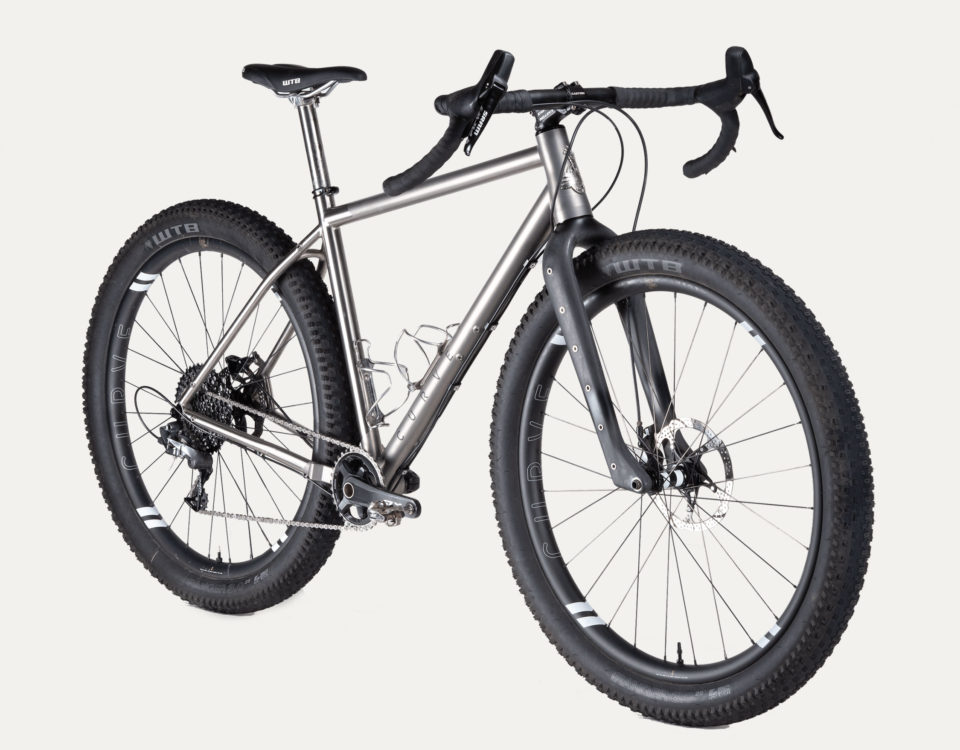
The Curve GMX+ is available on pre-order now in configurations below for an April release date. Learn more over at CurveCycling.com.au.
- GMX+ Frameset AUD $4,499 (about $2,989 USD)
- GMX+ Frame Module AUD $4,599 (includes Walmer Bars)
- GMX+ Frame Module or Frameset + Dirt Hoops Wider AUD $2,199
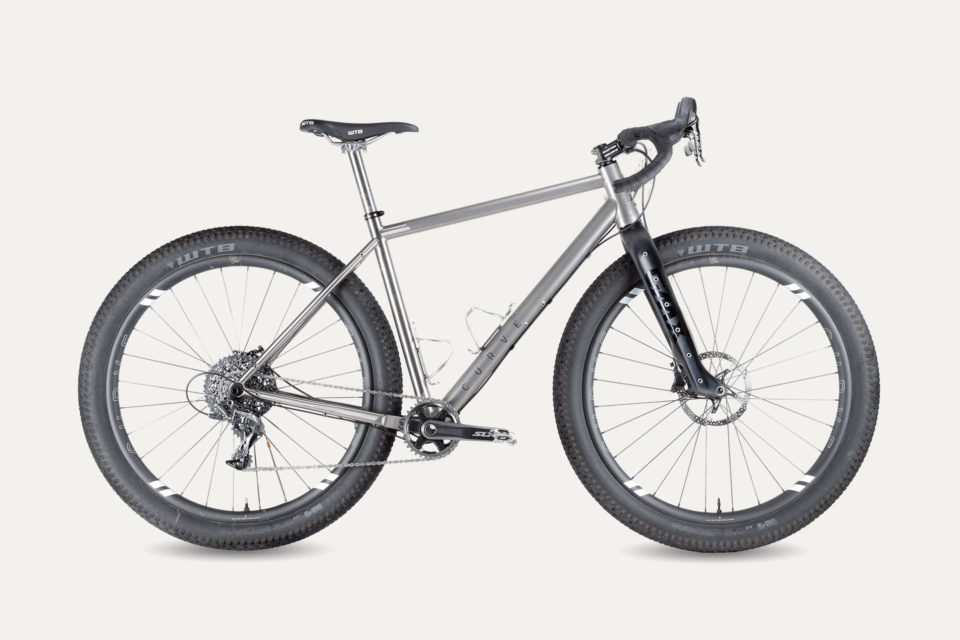
Please keep the conversation civil, constructive, and inclusive, or your comment will be removed.







